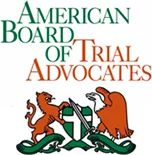At Lamothe Law Firm, LLC, maritime personal injury claims represent the majority of our trial practice. Although our attorneys are also admitted to practice in Mississippi and Texas, where coastal federal district and state county courts have some maritime cases, Lamothe Law Firm is home-based in New Orleans, which is the heart of maritime litigation in America. Our attorneys have decades of experience in almost every area of maritime litigation, including trials and appeals.
Our office is literally across the street from the U.S. District Court for the Eastern District of Louisiana and the U.S. Court of Appeals for the Fifth Circuit. More maritime cases are filed or appealed in these two courts than any in any other federal courts. Also located in New Orleans are three state courts where more admiralty and maritime cases are filed or appealed than anywhere else in America. They are the Civil District Court for Orleans Parish, the Louisiana Fourth Circuit Court of Appeals, and the Louisiana Supreme Court. Virtually always, there is a presiding judge well-versed in maritime law. We have an active litigation practice before all of these courts.
Our litigation practice includes “blue water” international shipping and “brown water” Mississippi River Jones Act claims, Longshoremen and Harbor Worker Compensation Act “905b” claims, offshore vessel Jones Act claims, general maritime law claims for unseaworthiness or for maintenance and cure, offshore platform third-party claims, and Death on the High Seas Act claims. This Primer has been prepared to help you with a general understanding of vessels, types of maritime claims, and the statutes of limitations which apply.
I. THE JONES ACT
The Jones Act, 46 U.S.C. § 30104, is a law enacted by Congress that provides protection to persons (“seamen”) who are members of the crew of a vessel. The Jones Act applies to inland river workers as well as offshore workers who work on a jack-up rig, semi-submersible, barge, drill ship, tug / towboat, crew boat , drill ship, dredge, floating crane, tanker, cargo ship, fishing vessel, chemical ship, research vessel, construction barge, lay barge, motorized platform, diving vessel, cruise ship, recreational boat, or other floating / movable structures.
The Jones Act governs the liability of vessel operators and marine employers for the work-related injury or death of an employee. It is a federal cause of action, meaning that the United States Congress intended for all seaman’s injuries throughout the nation to be guided by the same liability standards of the Jones Act.
Although the Jones Act protects seamen, it is not the same as workers’ compensation. It does not require payment regardless of fault. In order for a crew member to recover under the Jones Act, he must prove some negligence or fault on the part of the vessel’s owners, operators, officers, and/or fellow employees or by reason of any defect in the vessel, its gear, tackle, or equipment.
The Jones Act provides an injured seaman a remedy against his or her employers for injuries arising from negligent acts of the employer or co-workers during the course of employment on a ship or vessel. This means that the employer must do something unreasonable or fail to perform a reasonable act that would have prevented injury in order for the seaman to win his claim. An injured worker’s maritime claim under the Jones Act can also raise claims against a vessel’s owner that a dangerous condition existed on the vessel that made the vessel unseaworthy.
If you are a crewman on a boat or vessel and were injured while working, you will be entitled to sue your employer for injuries caused by your employer’s negligence the Jones Act. Offshore drilling rigs, drill ships, barges and other motorized structures which are moveable and which float from hole to hole (semis and jack-ups), are considered vessels under the Jones Act.
If you are a member of the crew of such a vessel and were injured while in the furtherance of your employment, then your employer will also be responsible for paying your medical bills (called cure) and paying you a small daily allowance (called maintenance) during the time you are injured. In addition, you may be able to file a lawsuit against your employer if your employer was negligent or if there was something wrong with the vessel which made it unfit for its intended purpose. In a Jones Act lawsuit you may seek to recover past and future economic loss, pain and suffering, mental anguish, disfigurement, loss of capacity to enjoy life, loss of the ability to perform household services and take care of yourself, and other damages recoverable under the maritime law.
II. “BLUE WATER” AND “BROWN WATER” VESSELS
1. “Blue water” vessels
“Blue water” merchant vessels plying international and worldwide trade are common in the Mississippi River as far north as the U.S. Highway 190 Bridge at Baton Rouge, Louisiana, which is the northern navigational limit for such vessels because of draft restrictions. These vessels typically include tankers, bulk carriers, and container ships.
2. “Brown water” vessels
“Brown water” vessels typically include harbor craft, dredge vessels, ferry boats, and towboats (which actually push flotillas of barges). River barges typically contain liquid and bulk products. They can be open hoppers, covered hoppers, or tankers. Towboats of various sizes and horsepower are found virtually everywhere on the Mississippi River and its tributaries, with the largest operating on the uncontrolled (i.e., no locks) lower Mississippi River (below Cairo, IL, to Plaquemines Parish, Louisiana).
III. GULF OF MEXICO VESSELS
There are five principal types of vessels on which Gulf of Mexico offshore crew member injuries occur. They are “jack-up” drilling rigs, semi-submersible drilling rigs, drill ships, offshore supply vessels, and crew boats. Crewmen on any of these are “Jones Act” seamen. They are entitled to warranties of seaworthiness, and no fault remedies such as maintenance and cure.
1. “Jack-Up” Drilling Rig
Despite looking a lot like a fixed platform, a “jack-up” drilling rig is actually a vessel. It typically has a long legs on the corners of a barge type hull that can lower or raise the rig in and out of the water. A “jack-up” is a vessel even when it is working with its legs on the bottom. Workers aboard a jack-up-rig are generally Jones Act seamen. “Jack-up” rigs are most frequently used in the shallow coastal waters of the Gulf of Mexico. The “jack-up” rig is on the right, below, and a fixed platform is on the left.
2. Semi-submersible Drilling Rig
Although it looks like a fixed platform, semi-submersible drilling rigs are vessels. They feature drilling decks raised on columns above submarine hulls. They can be towed into position by a tugboat and anchored, or moved by and kept in position by their own azimuth thrusters with dynamic positioning.
3. Drill Ship
A drill ship is a vessel which has a conventional hull above which a drilling derrick is mounted. Because it is a ship, it does not need tugboats to keep it in place during operations. This specially equipped vessel can drill in very deep waters.
4. Offshore Supply Vessel
Offshore supply vessels, or “OSVs,” are the work horses of the Gulf of Mexico. They transport tools, food, drilling supplies, and all manner of items to the oilfields and the drilling vessels and platforms in them. They are often used as “stand-by” vessels in case of emergencies. Cranes typically move supplies to and from these vessels.
Crew boats are the fast “maritime taxis” of the offshore oil industry. They are principally used to transfer personnel from vessels and platforms which are not so remotely located in the Gulf of Mexico as to require long range helicopter service.
IV. PLATFORMS
Platforms are not vessels, and platform workers are not “seamen.” They do not have claims under the Jones Act. Instead, their injuries are covered either by the Longshoremen and Harbor Workers Compensation Act or the workers compensation laws of the adjoining state. Platforms come in two types, “fixed” platforms and “spar” platforms.
1. Fixed Platforms
A “fixed” platform is a permanent, immobile structure built on legs resting on the sea floor. Typically, they are constructed at locations where a drilling vessel has already located oil or gas resources.
There are two general types of fixed platforms. One, a “drilling platform” is used to drill additional wells. The other is a “production platform” which typically extracts hydrocarbons from wells in existing oilfields. Often, oil and natural gas pipelines run from production platforms to the shore.
Workers on fixed platforms are generally covered by the provisions of LHWCA if their injuries or death were caused by actions of the worker’s employer or co-employees. Negligence claims against non-vessel third parties are brought under Louisiana law (or the law of the adjacent state).
2. “Spar” Platforms
“Spar” platforms are considered to be platforms and not vessels, although they are free floating and do not have legs which connect them to the sea floor. “Spar” platforms are used in very deep waters, and have been developed as an alternative to conventional fixed platforms. A “spar” platform typically consists of a large-diameter, single vertical cylinder supporting a deck. The cylinder is weighted at the bottom to lower the center of gravity of the platform and provide stability. “Spar” platforms are more-or-less permanently anchored to the seabed by way of a spread mooring array system.
V. OUTER CONTINENTAL SHELF LANDS ACT
The Outer Continental Shelf Lands Act (OCSLA), 43 U.S.C. § 1331, et seq., defines the outer continental shelf as “any and all submerged lands that are lying beyond state coastal waters, three miles or more from shore, that are under United States jurisdiction.”
One of the major purposes of the OCSLA is to allow the Secretary of the Interior to grant leases for the exploration and development of minerals, oil and other natural resources. More importantly, for offshore workers, the OCSLA extends the benefits of the Longshoremen and Harbor Workers Compensation Act (LHWCA), 33 U.S.C. § 901, et seq., to non-seamen who are employed on the outer continental shelf.
This means that if you are working on the subsoil or seabed of the outer continental shelf, or if you work on an artificial island, installation or any other facility that meets following requirements, you may be eligible for compensation under the LHWCA if you are injured while on the job. Working on a fixed platform would qualify for an OCSLA claim. Under OCSLA third party non employer claims can be pursued by applying the negligence law of the adjacent state.
To qualify the facility or structure that you work on must be:
• Permanently or temporarily attached to the outer continental shelf and it has been erected on the seabed of the outer continental shelf and its presence on the outer continental shelf is for the purpose of exploring, developing or producing natural resources from the outer continental shelf (for example, a stationary oil platform); or
• It is permanently or temporarily attached to the seabed of the outer continental shelf, is not a ship or a vessel, but its purpose is to transport natural resources from the outer continental shelf (for example, a pipeline).
To qualify, your job must support operations to explore for, develop, remove or transport by pipeline the natural resources of the outer continental shelf.
The LHWCA allows qualified injured workers to receive federal workers’ compensation type benefits for their injuries without regard to fault. The compensation is more limited than that allowed under the Jones Act, 46 U.S.C. § 30104, et seq., or the Death on the High Seas Act, 46 U.S.C. § 761, et seq.
VI. DEATH ON THE HIGH SEAS ACT
The Death On The High Seas Act (DOSHA), 46 U.S.C. § 761 et seq., provides recovery for the death of any person caused by a wrongful act, neglect or default occurring on the high seas more three miles from the shore.
VII. LONGSHOREMEN AND HARBOR WORKER COMPENSATION ACT
Under the Longshoremen and Harbor Workers Compensation Act (“LHWCA”), 33 U.S.C. § 905(b), a longshoreman or harbor worker may bring a cause of action for personal injury or death against a vessel owner or other third party that is not his employer, or the negligence of the vessel owner or third party.
VIII. STATUTES OF LIMITATION FOR OFFSHORE INJURY CASES
A. PLATFORMS
The Outer Continental Shelf Lands Act (“OSCLA”), 43 U.S.C. § 1331, et seq., requires that fixed platforms on the outer continental shelf be treated as though they were federal enclaves in an inland state. Laredo Offshore Constructors, Inc. v. Hunt Oil Co., 754 F.2d 1223 (5th Cir. 1985). If a fixed platform worker is injured or killed as a result of the negligence of third- parties, not the worker’s employer or co-employees, the statute of limitations for the third- party action is found in the law of the state contiguous to the offshore platform. These statutes of limitation also apply to floating “Spar” platforms.
Insofar as most platforms are in “Louisiana waters,” the most commonly applied statutes of limitation are from Louisiana.
1. Louisiana
a) General personal injury statute of limitations
Louisiana Civil Code article 3492 provides that “Delictual actions are subject to a liberative prescription of one year. This prescription commences to run from the day injury or damage is sustained.”
b) Survival actions
Louisiana Civil Code article 2315.1 A provides that “If a person who has been injured by an offense or quasi offense dies, the right to recover all damages for injury to that person … caused by the offense or quasi offense, shall survive for a period of one year from the death of the deceased …”
c) Wrongful death actions
Louisiana Civil Code article 2315.2 B provides a separate damage remedy for the survivors of a wrongful death victim. It provides that “The right of action granted by this Article prescribes one year from the death of the deceased.”
NOTE: But for a vessel owner’s six (6) month time period to file a limitation of liability complaint under 46 U.S.C. § 185 and Fed. R. Civ. P. Supplemental Admiralty Rule F, these are the shortest statutes of limitations affecting maritime claims.
2. Alabama
a) General personal injury statute of limitations
Alabama Code § 6-2-38 (l) provides that “All actions for any injury to the person or rights of another not arising from contract and not specifically enumerated in this section must be brought within two years.”
b) Wrongful death
Alabama Code § 6-2-38 provides that “An action by a representative to recover damages for wrongful act, omission, or negligence causing the death of the decedent under Sections 6-5-391 and 6-5-410 must be commenced within two years from the death.
3. Texas
a) General personal injury statute of limitations
Texas Civil Practice and Remedies Code, § 16.003 (a), provides that “… a person must bring suit for … personal injury … not later than two years after the day the cause of action accrues.”
b) Survival actions
Texas Civil Practice and Remedies Code § 71.021(b) allows an estate, heirs or legal representative to bring a survival action. §71.021(c) provides that it is prosecuted in the same manner as an ordinary personal injury lawsuit where the injured person had lived.
c) Wrongful death actions
Texas Civil Practice and Remedies Code, Title 2 B § 16.003 (b), provides that “A person must bring suit not later than two years after the day the cause of action accrues in an action for injury resulting in death. The cause of action accrues on the death of the injured person.”
4. Mississippi
a) General personal injury statute of limitations
Mississippi Code. Ann. § 15-1-49 provides that “All actions for which no other period of limitation is prescribed shall be commenced within three (3) years next after the cause of such action accrued, and not after.”
b) Wrongful death
Mississippi Code. Ann. § 15-1-49 also applies to wrongful death actions. The “discovery rule” applies.
5. Florida
a) General personal injury statute of limitations
Florida Stat. Ann. § 95.11 (3) (a) provides that an action founded on negligence shall be commenced within four (4) years.
b) Wrongful death
Florida Stat. Ann. § 95.11 (4) (d) provides that an action for wrongful death shall be commenced within two (2) years.
B. FEDERAL VESSELS
1. Suits in Admiralty Act
The Suits in Admiralty Act (“SAA”), 46 U.S.C. § 30901, et seq., provides the exclusive remedy for claims within admiralty jurisdiction against the United States. See, e.g., McCormick v. United States, 680 F.2d 345 (5th Cir. 1982). If, e.g., a vessel collided with an obstruction to navigation maintained by a federal entity, such as the Corps of Engineers, suit is proper under the SAA.
The SAA includes a two-year statute of limitations, 46 U.S.C. § 30905, and does not require a pre-suit administrative claim.
2. The Public Vessels Act
The Public Vessels Act (“PVA”), at 46 U.S.C. § 31102 (a) (1) provides that “A civil action in personam in admiralty may be brought, or an impleader filed, against the United States for damages caused by a public vessel of the United States.” The provisions of the SAA are incorporated by reference in 46 U.S.C. § 31103. Therefore, the SAA’s two-year statute of limitations in 46 U.S.C. § 30905 applies to the PVA.
NOTE: Persons injured aboard vessels owned by the United States must bring suit against the United States pursuant to the PVA, and not under the Longshoremen and Harbor Workers Compensation Act, 33 U.S.C. § 905b, or the General Maritime Law, 28 U.S.C. 1333(1). This shortens the statute of limitations from three years under 46 U.S.C. § 30106 to two years under 46 U.S.C. § 30905.
NOTE: A seaman employed by the United States does not have a Jones Act claim, but must proceed under the Federal Employer’s Compensation Act, 5 U.S.C. § 8108. See, e.g., Johansen v. United States, 343 U.S. 427 (1952).
NOTE: A seaman employed by a private entity but injured aboard a government-owned ship must pursue his maintenance and cure claim against the United States and not against the seaman’s employer. See, e.g., Manuel v. United States, 50 F.3d 1253 (4th Cir. 1995).
NOTE: The AEA, § 30101 (c)(2), applicable to injuries caused by a vessel on navigable water but consummated on land, imposes an administrative claim requirement in suits against the United States, which includes a mandatory six-month consideration period. Thus, there are circumstances where the two year statute of limitations under the SAA or PVA can be reduced to 18 months!
3. The Admiralty Extension Act and claims against the U.S. government
The Admiralty Extension Act (“AEA”), at 46 U.S.C. § 30101 (c) (1) provides “In a civil action against the United States for injury or damage done or consummated on land by a vessel on navigable waters, chapter 309 (the SAA) or 311 (the PVA) of this title, as appropriate, provides the exclusive remedy.”
The AEA, at 46 U.S.C. § 30101 (c)(2), controls both Waiver of sovereign immunity and when a claimant can file suit. It provides that “A civil action described in paragraph (1) may not be brought until the expiration of the 6-month period after the claim has been presented in writing to the agency owning or operating the vessel causing the injury or damage.”
NOTE: If you wait more than 18 months post-accident before you present your administrative demand, your suit will be time-barred. Why? Because the statute says you can’t bring suit until six months after your claim is presented, and if you’ve waited more than 18 months to present the pre-requisite administrative demand, the two-year statute of limitations will run before you can file suit. See, e.g., Loeber v. Bay Tankers, Inc., 924 F.2d 1340 (5th Cir. 1991), cert. denied, 502 U.S. 819 (1991).
NOTE: Even if your client’s administrative claim is presented and denied the day your cause of action arises, you will still have to wait six months to file suit. File your suit prematurely and it will be dismissed because sovereign immunity was not properly waived.
C. THE FEDERAL TORT CLAIMS ACT
28 U.S.C. § 2401(b), applicable to claims under the Federal Tort Claims Act, 28 U.S.C. § 2761, et seq., provides that “A tort claim against the United States shall be forever barred unless it is presented in writing to the appropriate Federal agency within two years after such claim accrues or unless action is begun within six months after the date of mailing, by certified or registered mail, of notice of final denial of the claim by the agency to which it was presented.”
NOTE: If the cause of action is maritime in nature, the FTCA does not apply, and incorrectly proceeding under the FTCA does not toll the two-year statute of limitations of the SAA or PVA. See, e.g., Ferreiro v. United States, 934 F.Supp. 1375 (S.D. Fla. 1996).
D. THE JONES ACT
The Jones Act, 46 U.S.C. § 30104, covers any seaman who suffers personal injury or dies as the result of injuries sustained in the course of employment. The Jones Act defendant is the seaman’s employer. A Jones Act action must be instituted within the three-year statute of limitations period established in the Federal Employers Liability Act, 45 U.S.C. § 56, which applies in both injury and death claims.
NOTE: A seaman employed by the United States does not have a Jones Act claim, but must proceed under the Federal Employer’s Compensation Act, 5 U.S.C. § 8108. See, e.g., Johansen v. United States, 343 U.S. 427 (1952).
E. LONGSHOREMEN AND HARBOR WORKER’S CLAIMS
Under the Longshormen and Harbor Workers Compensation Act (“LHWCA”), 33 U.S.C. § 905(b), a longshoreman or harbor worker may bring a cause of action for personal injury or death against a vessel owner or other third party that is not his employer, or the negligence of the vessel owner or third party. There is a three-year statute of limitations for actions under this section. 46 U.S.C. § 763a.
NOTE: The Outer Continental Shelf Act, 33 U.S.C. § 1333(b), expressly provides that platform workers whose injuries arise out of operations on the Outer Continental Shelf are entitled to workers compensation benefits under the LHWCA. 33 U.S.C. § 905(c) of the LHWCA provides “In the event that the negligence of a vessel causes injury to a person entitled to receive benefits under this Act by virtue of section 1333 of title 43, then such person, or anyone otherwise entitled to recover damages by reason thereof, may bring an action against such vessel in accordance with the provisions of subsection (b) of this section.”
F. GENERAL MARITIME LAW CLAIMS
1. Negligence Claims
General maritime law (GML) negligence claims are available for injury or death cases occurring in navigable waters of the United States, including state territorial waters. These claims, which are for persons who are not Jones Act seamen or relegated to remedies under the LHWCA, are governed by the three-year statute of limitations found in 46 U.S.C. § 763a.
NOTE: These actions can be brought in either federal or state courts because 28 U.S.C. § 1333 (1) provides “The district courts shall have original jurisdiction, exclusive of the courts of the States, of: (1) Any civil case of admiralty or maritime jurisdiction, saving to suitors in all cases all other remedies to which they are otherwise entitled.” The second portion of this jurisdictional statute is called the “Savings to Suitors” clause, and it allows suit in state courts.
NOTE: GML negligence claims brought in federal court pursuant to § 1333 (1) are bench-tried. If they are brought in state court pursuant to the “Savings to Suitors” clause, they are bench tried.
NOTE: If diversity of citizenship and appropriate amount in controversy are present, GML claims can be brought on the “law side” of federal court, with a jury, pursuant to 28 U.S.C. § 1332 (i.e., “diversity of citizenship” jurisdiction).
2. Unseaworthiness
The GML doctrine of unseaworthiness imposes an absolute and non-delegable duty to provide a vessel that is reasonably fit for its intended purposes, or for its intended voyage. A claim based on unseaworthiness must be brought within three years pursuant to 46 U.S.C. § 763a.
NOTE: This “GML” claim can be brought on the “admiralty side” of federal court pursuant to 28 U.S.C. § 1333 (1), or in state court pursuant to § 1333’s “Savings to Suitors” clause. Either selection imposes a bench trial.
NOTE: When a GML unseaworthiness claim is coupled with a Jones Act claim, which provides a statutory right to jury trial, both claims may be tried to a jury. See Fitzgerald v. United States Lines, 374 U.S. 16 (1963).
NOTE: The unseaworthiness remedy does not extend to passengers or persons transiently aboard a vessel. See Kermarec v. Compagnie Generale Transatlantique, 358 U.S. 625 (1959) and Rutledge v. A&P Boat Rentals, Inc., 633 F.Supp. 654 (W.D. La. 1986).
3. Maintenance and Cure
A seaman who suffers illness or injury while “in the service of the ship” is entitled to recover maintenance and cure from his employer. See Warren v. United States, 340 U.S. 523 (1951). It is awarded to compensate the seaman for medical and living expenses until the seaman reaches what the law deems “maximum medical cure.” It is a no fault remedy arising from the seaman’s contract with his employer. A claim for maintenance and cure must be brought within three years pursuant to 46 U.S.C. § 763a.
NOTE: A maintenance and cure claim may be brought on the “admiralty side” of federal court (bench trial) pursuant to 28 U.S.C. § 1333 (1), on the “law side” of federal court (with a jury) if the prerequisites for diversity jurisdiction under 28 U.S.C. § 1332 are present, or in state court pursuant to 28 U.S.C. § 1333 (1)’s “Savings to Suitors” clause (bench trial).
NOTE: When a maintenance and cure claim is coupled with a Jones Act claim, which provides a statutory right to jury trial, both claims may be tried to a jury. See Fitzgerald v. United States Lines, 374 U.S. 16 (1963).
G. DEATH ON THE HIGH SEAS ACT CLAIMS
The Death On The High Seas Act (DOSHA), 46 U.S.C. § 761 et seq., provides recovery for the death of any person caused by a wrongful act, neglect or default occurring on the high seas more three miles from the shore. The claim under DOSHA must be brought within three years pursuant to 46 U.S.C. § 763a.
REQUEST A FREE CONSULTATION
LAMOTHE LAW FIRM
400 Poydras Street, Suite 176
New Orleans, LA 70130
(504) 704-1414
[email protected]

















